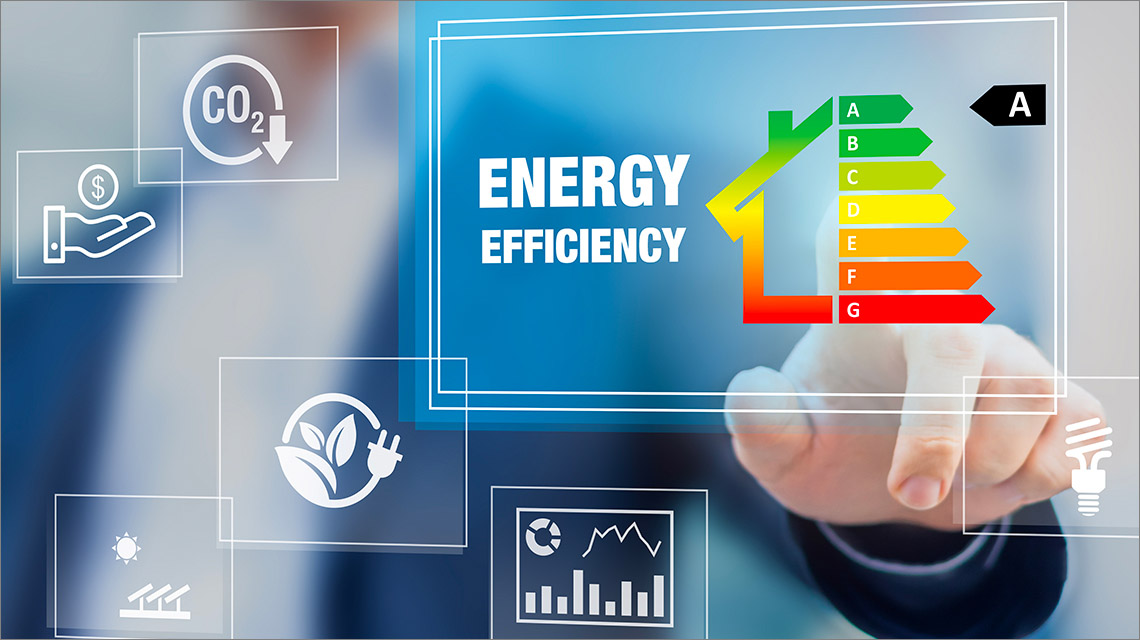Italian National Agency for New Technologies, Energy and Sustainable Economic Development

Energy efficiency: New ENEA-MiTE information and training program is underway
The second Information and Training Program (PIF) 'Italy in Class A' on energy saving and efficiency by ENEA, promoted and funded by the Ministry of Ecological Transition (MiTE) for the two-year period 2022-23 [1] is underway.
"Italy is the first country in Europe to implement a communication and awareness campaign on the rational use of energy entirely financed by the state. The new program, addressed particularly to citizens, businesses and the Public Administration, is about to start.
The central idea will be 'innovation', not only in a strictly technological sense but as a drive for change, to achieve the energy efficiency objectives by 2030 ", said Ilaria Bertini, Head of the ENEA Energy Efficiency Department. "Against a binding savings target for our country of 51.44 Mtoe of final energy, the measures provided for by the Integrated National Energy and Climate Plan will allow us to achieve higher cumulative savings, equal to 57.44 Mtoe, of which 1.43 Mtoe (approximately 2.5%) through the actions we will implement with the new PIF ”, pointed out Bertini.
The path undertaken by ENEA with the first National Information and Training Program has made it possible to obtain an overall cut in energy consumption of 411 ktoe by 2020 [2], equal to the annual consumption of electricity and gas of approximately 265,000 households[3]. In particular, the actions for citizens led to a reduction of 146 ktoe (corresponding to 37 ktoe / year), of which: 20 ktoe / year through the television campaign (5 million viewers), 13 ktoe / year from roadshows and from the energy efficiency month (3.5 million people reached thanks to 400 events and 250 projects) and just over 4 ktoe / year with the digital marketing campaign (1.2 million contacts).
"We estimated these savings based on the results of a public survey we commissioned to the Demopolis Institute and which involved a sample of over 3 thousand people, representative of the adult Italian population. In addition, the investigation revealed the potential of information campaigns in raising awareness and promoting change in the habits of families and individual citizens", explained Michele Preziosi, researcher at the ENEA Energy Efficiency Department.
18% of respondents said to be "very informed" on issues concerning energy and its use at home, and a further 45% as "fairly informed". 37% said to be poorly informed, increasingly among the youngest. The segment with a good level of information turns out to be the most active in avoiding energy waste even in everyday household behavior, knows the APE, takes care of the energy class of household appliances and is the most aware that energy saving is the main renewable resource.
After all, it is also the segment that has conducted interventions to increase energy savings like renovations, change of fixtures, replacements of boilers or air conditioners.
With regard to the actions carried out by the Program for companies (such as roadshows and business to business meetings), the savings share achieved was a total of 265 ktoe for the period 2015-2020, out of a total of 4 Mtoe / year of energy savings generated by all the efficiency measures.
"To calculate the share of energy savings directly related to the actions taken in the PIF, we launched a survey to which 300 companies subject to the obligation of energy audit responded with the communication to ENEA of the energy savings achieved each year. 94% of companies attributed a decisive role to greater energy efficiency in the decision to implement energy saving measures. Of these, 12% considered the information and training activities carried out by ENEA to be 'very important' in the decision to implement an energy efficiency intervention ", Preziosi pointed out.
In Italy, gross inland energy consumption in 2020 was 141.6 Mtoe (-8.9% compared to 2019). Considering the final uses of energy, in 2020 transport (28.12%) and civil uses (45.81%) were confirmed as the most energy-intensive sectors. Overall, there was a decline in final consumption in every sector: transport (-19.2%), industry and civil uses (-4.3%), with the exception of the agricultural sector, where energy consumption increased by 1.4% between 2019 and 2020.
As for primary energy intensity, in Italy it was lower than both the average of the EU28 countries and those belonging to the Euro zone. In 2019 the value of the indicator was equal to 90.1 toe / M €, while in the entire EU28 it stood at 101.7 toe / M €. However, the distance between Italy and other European countries is shrinking: in 1995 Italy had a lower indicator value, respectively, by 32.1% and 25.7% compared to the EU28 and the euro area, while in 2019 the difference decreased to 11.4% and 11.3%. Therefore, the efficient result obtained by Italy makes the reduction of energy intensity more complicated, as these data show: in the period 1995-2019 the energy intensity was reduced by 16.2% in Italy, by 35.8% in the EU and 29.8% in the Eurozone.
Note
[1] pursuant to art. 12 of the Legislative Decree 14 July 2020 n. 73, paragraph 1
[2] The national energy efficiency targets for 2020, specified pursuant to Article 3, paragraph 1 of Legislative Decree no. 102 of 2014, transposing the Energy Efficiency Directive, provided for an improvement program aimed at saving 20 Mtoe / year of primary energy and 15.5 Mtoe / year of final energy. By 2020, the expected consumption in terms of primary energy was 158 Mtoe and 124 Mtoe of final energy.
[3] Estimated annual consumption of electricity and gas of the household type 18,022 kWh (source ARERA), equal to 1.55 toe (source IEA) - https://www.arera.it/it/dati/aggtrim.htm#ele.
